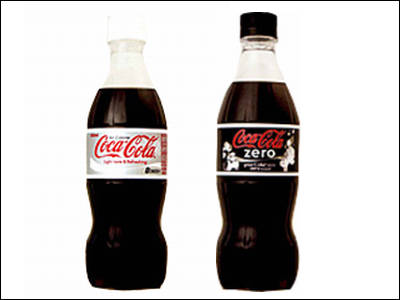What is the history of the world-famous confectionery maker 'Haribo', which is a colorful gummy in the shape of a cute bear?

The Colorful History of Haribo Goldbears, the World's First Gummy Bears | History | Smithsonian Magazine
https://www.smithsonianmag.com/history/the-colorful-history-of-haribo-goldbears-the-worlds-first-gummy-bears-180980094/
Hans Riegel, a German confectioner, had a candy named ' Haribo ' in 1920, derived from his name ' Hans Riegel ' and the place name ' Bonn '. Established a company. At the time of its founding, Rigel worked in a kitchen with only copper pots, rolling pins, and stoves, and the first employee hired the following year was his wife, Gertrud, who delivered products to customers by bicycle. It was said that it was. 'We know that Apple was founded in the garage, and Haribo at the time was like that,' said Christian Burman, senior vice president of corporate communications at Haribo. I wanted to start something different on my own with a little chance and money. '
In 1922, Rigel developed the bear-shaped gummy prototype ' Tanzbären ' (meaning 'Dancing Bear'). 'The bear character is cute and loved by children,' said Burman. 'Riegel's idea was to make sweets with a specific shape.' Rigel used a cute bear to give his candy a face and personality.
On the left side of the image below is 'Tanzbären'.

by
Rigel was the first to make 'bear-shaped gummy candies,' but gelatin-based sweets, the predecessor of gummy candies, have existed before that. There are gumdrops that have been eaten since the 19th century, Turkish delight , Turkish delight, wine gum devised by liquor-free people, and even in Japan, it resembled a unique gummy in 1924, which was about the same time as Haribo was founded. Sweets and bontan candy are born.
Beth Kimmel, a confectionery expert and author of ' Candy: The Sweet History ,' points out that the predecessors of gummy candies are jellies and jams made by preserving fruits in pectin. Candy historian Susan Benjamin also said that the gummy candies made by Rigel were a fine-tuned version of the early candy, with the innovative part being 'bear shape and gentle sweetness.' According to Kimmel, Rigel understood that 'candy looks and feels important' with a good business sense, so he used advanced techniques for flavoring and coloring to create bear-shaped gummies. It was said that. Haribo began producing licorice-flavored gummy candies called 'Schwarzbär' (meaning 'Black Bear') in earnest in 1925, and grew to have 400 employees in the 1930s.
However, in the early 1940s, Germany became a battlefield in World War II, and Haribo was almost shut down. In addition, Rigel's sons Paul Jr. and Hans Jr. fought as German soldiers and were detained in American prisoner-of-war camps, and Riegel died in 1945 at the age of 52.

After the end of the war, his wife Gertrud led the company, and in 1946 when his two sons returned, Paul Jr. was in charge of confectionery production and Hans Jr. was in charge of marketing and sales to rebuild the company. It started from almost zero, but the number of employees, which was 30 immediately after the end of the war, increased to about 1000 in 1950, and in the 1960s, TV commercials were actively promoted. 'The Haribo brand was one of the first brands to advertise on television in Germany, which made Haribo and its products really popular,' said Burman.
Haribo spread throughout Europe in the decades following World War II, with the launch of the 'Gold Bear' brand, which is still familiar today, in 1960, and was even handled by the East German government-owned retail chain
Haribo, which made its foray into the United States in 1982, has redesigned its packaging and flavors to suit American tastes in order to win the competition with various candy companies. As a result, the bear-shaped gummy became so popular that Disney aired ' Adventures of the Gummy Bear ' from 1985 to 1991.

Haribo was also criticized during World War II as 'maybe he was forced into forced labor by the people of the internment camps and prisoners of war,' but Mr. Burman found evidence of forced labor in Haribo's investigation. He argues that it is unlikely that forced labor will be carried out at a candy maker that was not emphasized by the German government at the time. Also, in 2017, a documentary was aired that a carnauba wax supplier used to prevent gummies from sticking was slave laboring on a farm in Brazil, and Haribo also started an official investigation in response to the accusation. As a result, no evidence of slave labor was found, but Haribo stopped using carnauba wax and switched to beeswax .
At the time of writing the article, Haribo gummy can be eaten in more than 100 countries around the world, and more than 160 million gummy candies are shipped per day. Some gummies are unique to each country and sell gummies in the shape of dentition in Turkey, milk candies in the UK, and the fictional Smurfs in France and Germany in fiction. Gummy candies that imitate the smurfs are also on sale.
Mr. Burman speculates that eating Haribo can stir up 'childhood nostalgia' as to why Haribo continues to be successful in the first century. 'Our products are completely different from country to country, but this feeling connects people all over the world,' he said.
Amazon | Haribo Gold Bears 200g x 5 | Haribo | Gummy Mail Order

Related Posts:
in Food, Posted by log1h_ik







